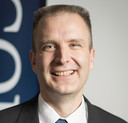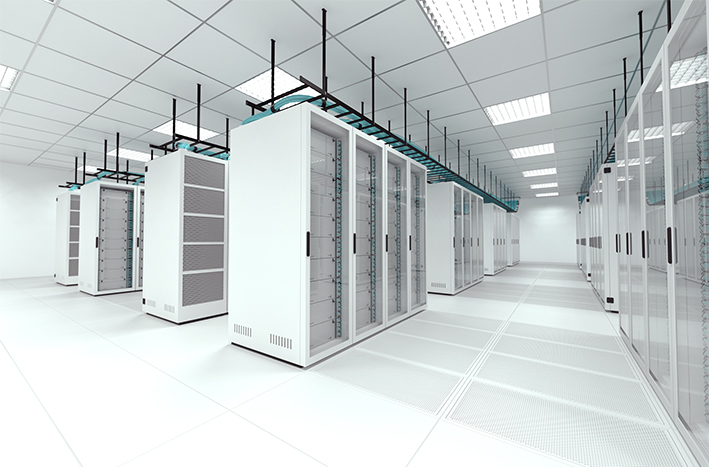Why Fixed and Mobile Networks are Merging
The promotion of broadband in Germany is enabling us to enter the digital age, with all its opportunities: a smart infrastructure and the transformation of the economy. What role does convergence play in this and what challenges must be overcome?

© SasinParaksa | istockphoto.com
There is great interest in the convergence of networks or, in other words, the merging of fixed and mobile networks. Since most network operators in Germany are already bringing fiber optic to the region, the time is right. There is no way around fiber, because the networks of the future will require extremely quick response times.
In order to understand what convergence means, a short excursion into the architectures for Radio Access Networks (RAN) is required. Occasionally there are two network components at mobile antenna sites: the Remote Radio Units (RRUs) and Base Band Units (BBUs). The BBU processes user control and data, while the RRUs generate radio signals that are transmitted over the airwaves via the antennas. In this configuration, a backhaul link is what connects the BBU at the cell site back to the Mobile Telephone Switching Offices (MTSOs).
However, the BBUs do not necessarily have to be distributed. In a centralized RAN architecture, all BBUs from the same area are relocated from their cell sites to the same MTSO. When the BBU is relocated to a centralized location, the segment connecting the BBU and the RRH extends to backhaul-like distances. This link is now called fronthaul.
Whether at the cell site or through the fronthaul link in a centralized architecture, BBUs and RRHs communicate using digital baseband interfaces. The most widely-used is called the Common Public Radio Interface (CPRI) and it can be carried over tens of kilometers, is compatible with SFP/SFP+ plug-in optics and most common optical transceivers (e.g. Ethernet and Fiber Channel), and supports rates of 2.458Gbps, 3.072Gbps, 4.915Gbps, 6.144Gbps, and 9.830Gbps.
These rates are relatively high when compared to the much lower 1Gbps handled by backhaul links. This is because CPRI is fundamentally Digital Radio over Fiber (D-RoF): The optical signal is directly modulated by a radio signal, then transmitted over the fiber. This high bandwidth combined with very low latency requirements are the reasons why fronthaul and centralized RAN architectures can only be implemented in an all-fiber topology.
Until recently, fixed and mobile networks have been deployed independently of one another with very limited joint usage of infrastructure. This has required enormous investments, which becomes unsustainable when considering the higher fiber requirements of centralized RAN architectures. The alternative is to unify the optical access to allow both fixed and mobile networks to share resources in what is called a converged network.
Today, fixed and mobile convergence is mainly implemented at the application and service level with all IP services and the IP multimedia subsystem (IMS). This convergence is already starting to blur the lines between fixed and mobile access, with users connecting their mobile devices to fixed access points and vice versa (e.g. mobile broadband access from laptops).
There are two deeper forms of carrier-based convergence – functional and structural. Functional convergence means the implementation of a generic network function to realize similar goals in different network types (fixed, mobile, Wi-Fi). Structural convergence is defined as pooling or sharing of network and infrastructure resources (cable plants, cabinets, buildings, sites, equipment, and technologies) for several network types (fixed, mobile, and Wi-Fi). Of these two, structural convergence is the one that will have the greater impact in the optical networks’ evolution, allowing converged operators to enjoy cost-benefits from deploying and operating a unified network infrastructure.
However, some challenges remain on the road to convergence. Network operators must increase the number of antennas needed to integrate fixed and mobile networks. This is the only way to create a solid basis for the data highway that Germany needs for digital transformation. With this expansion, individual connections will no longer be built selectively, but area-wide networks will be developed for large areas with fiber optics.
The second challenge is to master this expansion quickly and efficiently. The devil is in the detail: Only with careful planning of all trades involved can such a project be advanced smoothly. This includes not only fiber optic technology, but also the coordination of civil engineering and the optimization of internal workflows at the network operators.
Without innovation, however, such an expansion project cannot be sustained. Classical civil engineering is a complex matter. Many companies are already warning of capacity bottlenecks and citizens are annoyed by permanent construction sites where progress is slow and inconvenient. This is why network operators are also testing new installation methods. One solution, especially in sparsely populated rural regions, is above-ground cabling on masts. Corning has adapted products that have been used in the US market for years for the German market.
A trenching technique is also being tested, which allows cables to be installed in the ground much faster. With trenching, the fiber optic cable is not laid in deep trenches. Instead, a slit is milled into the ground, into which empty conduits are inserted. After completion of the construction, special fiber optic cables with an extremely small cross-section are blown into the mini-tubes contained in the empty conduit.
New approaches and solutions come from the most diverse corners of the industry. It is therefore essential that all stakeholders exchange information regularly. It is important to check again and again which low-cost, safe, simple, and durable technologies the manufacturers offer.
Tobias Schubert is an experienced manager of major clients with a long history in the telecommunications industry. Before taking over the role of Marketing Manager Major Accounts, he held various positions at Corning in commercial roles such as Finance, Sales Management, and Marketing. Schubert studied Economics at University of Applied Sciences at TH Wildau in Brandenburg, Germany.
Please note: The opinions expressed in Industry Insights published by dotmagazine are the author’s own and do not reflect the view of the publisher, eco – Association of the Internet Industry.





